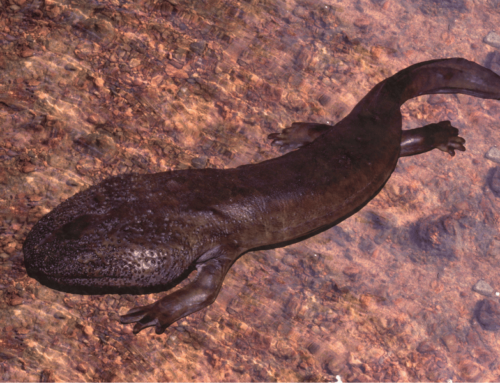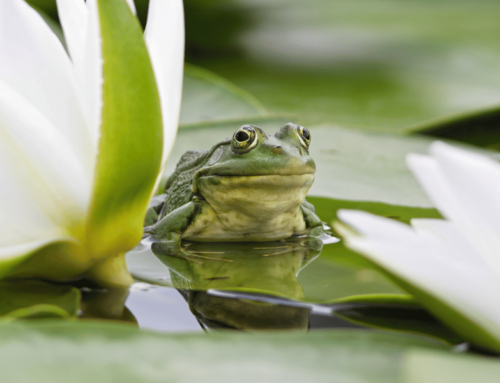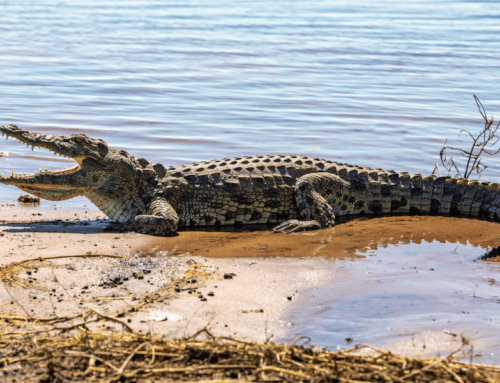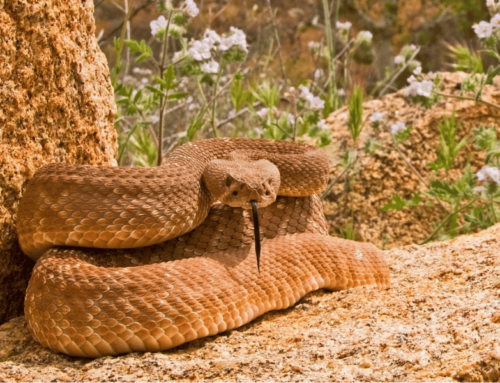Field herping in the Sahara Desert is not the easiest task for the aspiring wildlife enthusiast. Of the hotter deserts, it’s the biggest, covering a total of 3.6 million square miles (or 9.2 square kilometers). On average half of this desert receives less than one inch of rain. It’s also one of the hottest deserts, with record highs reaching 130 degrees Fahrenheit (54 Celsius).
Interestingly, the Sahara is switches from being a desert to a savanna grassland about every 20 thousand years. Today of course it’s in its desert phase.
Like many of the harshest locations on Earth, reptiles and amphibians have found ways to adapt to the Sahara. From tiny lizards that can fit in the palm of your hand, to giant crocodiles that sit at the top of the food chain. This enormous habitat is home to many amazing species.
Caution: The Sahara Desert is a harsh place and can present dangers to people who visit unprepared. Do proper research if you plan on visiting and don’t go by yourself if possible. Avoid close contact with venomous and aggressive animals as much as you can.
This post is a field herping guide to reptiles and amphibians of the Sahara Desert.
Field Herping in the Sahara Desert

1. Desert Monitor
The Desert Monitor is a species of monitor lizard. There are currently 3 subspecies: the Caspian monitor, the Grey monitor and the Indian Desert Monitor.
In size they can reach up to 6 feet in length including their tails. Their coloration varies from subspecies to subspecies but they usually have horizontal bands on their backs.
If you’re looking for this lizard, know that they are active in May and July. They are least active starting in September and through until April.

2. Sahara Sand Viper
The Sahara Sand Viper is a venomous, smaller species of snake. It can be found from the coast of the Western Sahara to the coasts of Egypt. It uses the sit-and-ambush style of hunting but will also actively seek out prey.
It maxes-out in size around a foot and a half in length. They are light beige with brown spots.
If you plan on finding venomous snakes like the Sahara Sand Viper, you’ll definitely want to have a snake hook on you to interact more responsibly.

3. Sahara Frog
Amphibians are even less adapted to life in the Sahara than most other types of animals. Amphibians generally need access to water for survival. Despite these unfavorable factors, the Sahara frog makes its home in north Africa. They can be found in or around standing water from Egypt to the Western Sahara.
Their coloration is a mix of green and brown and reach a maximum size of 4 inches.
Like most amphibians, it’s best not to handle them with your bare hands for long. They will absorb the chemicals and oils on your skin. This can prove toxic to them depending on what’s on your hands. If you find one and want to handle it, buy a pair of disposable gloves made of vinyl. Wearing gloves will also protect you from any pathogens on the frog.

4. West African Crocodile
The West African Crocodile is not as closely related to Nile Crocodile as you might think. Studies have shown that Nile crocodiles are more closely related to crocodilians from the new world.
In length, West African Crocodiles usually reaches a maximum length of 10 feet. Aside from its size, it is not easy to discern West African crocodiles from the Nile crocodile. West African Crocodiles in captivity have frequently been labelled as “Nile crocodiles” by mistake.
This species has a unique way to survive the dry conditions in the Sahara. When an extended dry season occurs, they will go into aestivation by hiding out in nearby caves or burrows. When the rains return, they emerge and return to bodies of water.
Their range overlaps with the range of Nile crocodile populations. When this overlap occurs, the Nile crocodiles can be found in the bigger rivers and the West African crocodile will prefer bodies of water in forested areas.

5. Egyptian Tortoise
This species was once more widespread throughout north Africa. Now, it is an endangered species. It can still be found in the desert areas of Egypt.
This is a small tortoise species. Adults only reach 3-4 inches in length. Their coloring consists of different shades of yellow, brown and black.
To find them in the wild, take note of the current weather. If it happens to be cold out, they will be most active in the afternoon. During hotter weather, they are active at dawn and dusk.

6. Saharan Horned Viper
The Saharan Horned Viper is among the most recognizable snakes in Africa. They can be easily discerned by the scales around their eyes that resemble horns. They are usually found in places with finer sand.
They can move by sidewinding, leaving tracks in the ground. This species is fond of staying hidden in the sand. This makes accidently stepping on or near them a real danger. Always look at where you’re stepping to avoid being bitten.

7. Saharan Spiny-Tailed Lizard/Uromastyx
Uromastyx is a genus that contains 15 different species of lizard. Alternatively, they are called Saharan Spiny-Tailed Lizards. These lizards are well-adapted to the extreme heat. They are popular in the pet trade among reptile keepers for their temperament and variety of colors. They are known for needing among the hottest temperatures of any of the commonly kept reptiles.
Uromastyx lizards can be recognized by their spiny tails and flat bodies. They stay small, not exceeding 2 feet in length (excluding the Egyptian Uroxmastyx).
You can find them in the wild by looking for rock formations, where uromastyx can be found basking in the sun. They are herbivorous and locations with vegetation can also be attractive to them.

8. The Saw-Scaled Vipers
This group of vipers are venomous like all other groups of vipers. Besides the Sahara Desert, they can be found in Arabia and Asia. There are 12 distinct species in this group and they stay relatively small. Thousands of people die from saw-scaled viper bites every year. Like other venomous snakes they can move by sidewinding.
These snakes are known for their unique threat displays. When sensing predators, they rub their scales together to create a sound that resembles a “crackling” noise.
They can strike fast as well and are very defensive. Despite being small, these snakes pack a lot of deadly venom. As a group, they are generally nocturnal.

9. Sandfish Skinks
Sandfish Skinks belong to the genus Scincus. This genus contains up to five species. These lizards can be found in sandy, desert areas where they like to dig through the sand. Their effectiveness at digging through the sand is how they got their name. At the first sign of predators, sandfish skinks can quickly bury themselves to hide.
These lizards stay small and most stay well under a foot in length.

10. Nile Crocodile
Nile Crocodiles are the second biggest reptiles on Earth. They are second only to the Saltwater Crocodile. The Nile Crocodile can of course be found in Egypt along the Nile River.
Most are aware that the Nile crocodile is found around the Nile River. However, there are now populations in Mauritania, on the opposite end of the continent. They survive in temporary and permanent bodies of freshwater, even though there isn’t as much as the rest of Africa. When bodies of water dry up, the Nile crocodiles have to travel elsewhere.
Description:
Males grow to around 16 feet in length with unusually large individuals reaching around 20 feet. Their coloration is mostly of darker brown, black and darker yellow. This coloration makes it easy for them to camouflage in the areas that they frequent.
Behavior:
Nile Crocodiles are temperamentally different from their cousins the West Africa Crocodile, as they are notably more aggressive on average. They are responsible for hundreds of deaths every year. If you combined the annual deaths from Nile crocodiles and saltwater crocodiles, this number would exceed the deaths from all other crocodilian species combined.
Nile Crocodiles are semi-social creatures. They will often hang around in the same parts of rivers and other surface waters. These groups will establish hierarchies based on size. The biggest males are naturally at the top of the hierarchy and get to go where they want and also get to eat first. Fights break out when the established order is disrespected.
When hunting, they use ambush tactics. Nile crocodiles can wait for days or longer, without moving, for the right moment to catch passing prey.
Conclusion:
The Sahara Desert is an enormous habitat that presents many opportunities for field herping. Wildlife, including reptiles and amphibians, have managed to adapt to life in this harsh environment. This list does not cover all of the species you can find in this habitat. There may even be undiscovered species that have yet to be revealed.
If you are planning a trip to this area of Africa, please do further research on the exact places you want to visit and take further precautions to stay safe.





